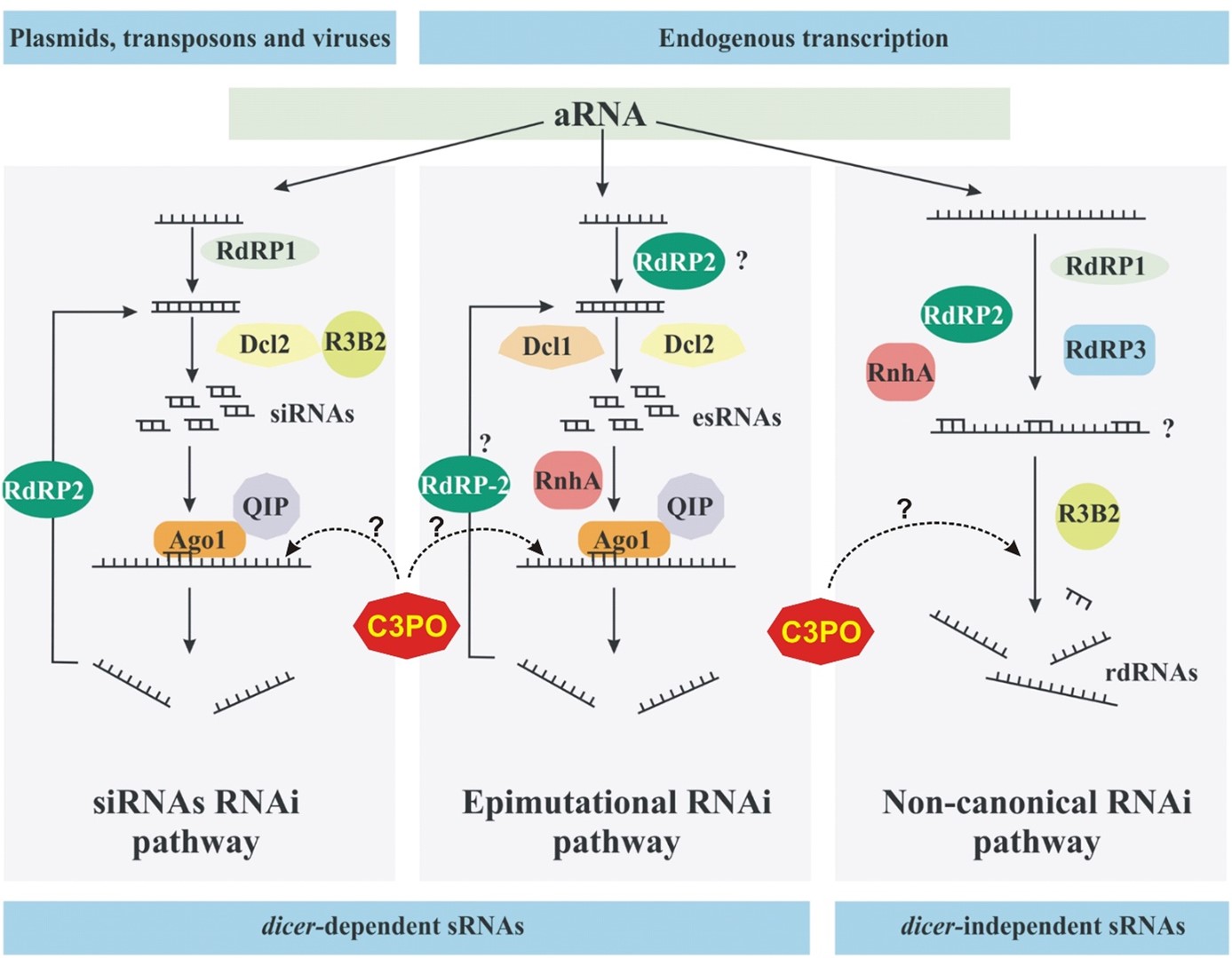PERSONAL INFORMATION
Postdoctoral Researcher at UPNA
Researchgate: https://www.researchgate.net/profile/Trung-Trieu
ORCID: https://orcid.org/0000-0002-4220-9078
Email: anhtrung.trieu@unavarra.es
LinkedIn: https://www.linkedin.com/in/trung-trieu-99a1a795/
Twitter: @trungtrieu_uea
Youtube: https://www.youtube.com/channel/UC0CT854wqKV7JCCZxmrx0QA
Facebook: https://www.facebook.com/trungtrieu.vn

DESCRIPTION OF THE PROJECT
RNA silencing is a conserved gene regulatory mechanism in eukaryotes that represses gene expression in a homology-dependent manner. The canonical silencing mechanism requires the presence of the Dicer to process dsRNA precursors into siRNAs, which guide the RISC to degrade target mRNAs. The basal fungus Mucor lusitanicus has been used for model studies on molecular mechanism of RNAi and fungal infection mucormycosis. Besides the canonical silencing pathway, we also identified the non-canonical RNA degradation mechanism in this fungus. This mechanism is RdRP-dependent but Dicer-independent and regulates the expression of more than 500 protein-coding genes through the production of esRNAs. C3PO is a highly conserved complex of Translin and TRAX (Translin associated protein X) which is involved in many biological processes in different organisms. C3PO can promote RNAi mechanisms in human and Drosophila by removing the passenger strand of the siRNA duplex. However, C3PO might have different role in different organism, because it is not involved in RNAi in the fungus Neurospora. The objectives of this study are identifying the biological function of C3PO complex in the RNA silencing pathways, morphogenesis and pathogenesis in the fungus M. lusitanicus. The expected results of this project will contribute investigation of C3PO’s roles in fungi, which promotes further studies and develops effective treatment against mucormycosis.

The aim of this project is finding the function of the C3PO complex in the RNAi pathways in the basal fungus Mucor lusitanicus. The figure of different RNAi mechanisms found in this fungus (modified from Calo et al., 2017, https://doi.org/10.1371/journal.pgen.1006686).


